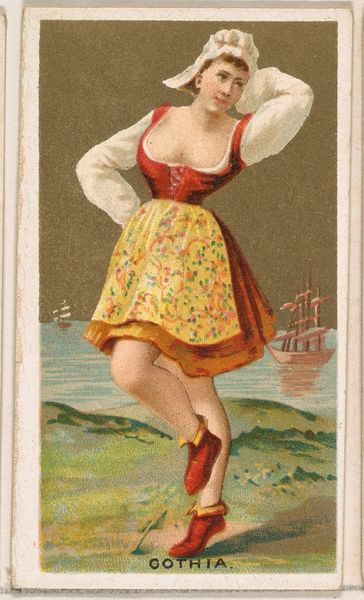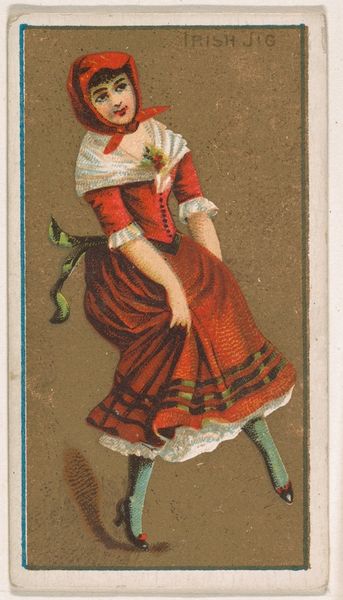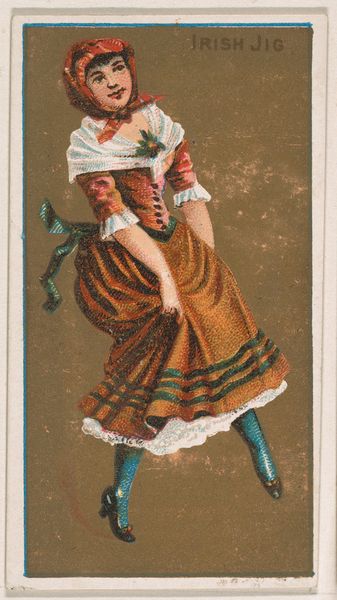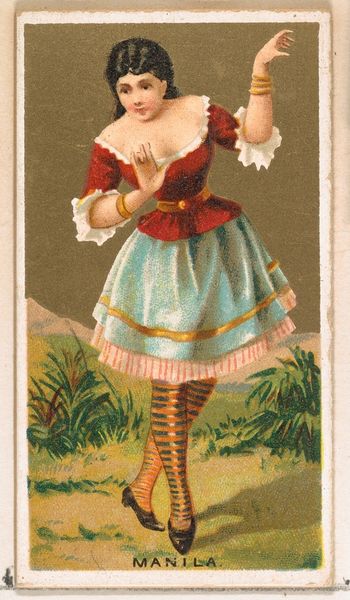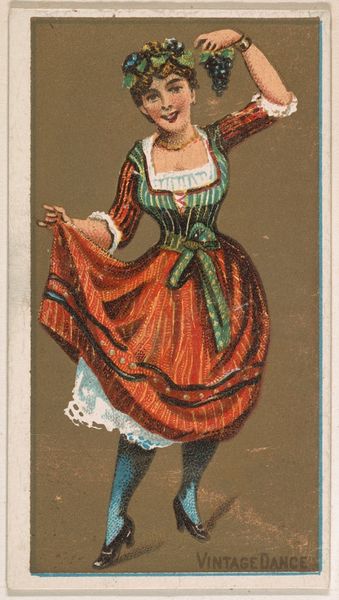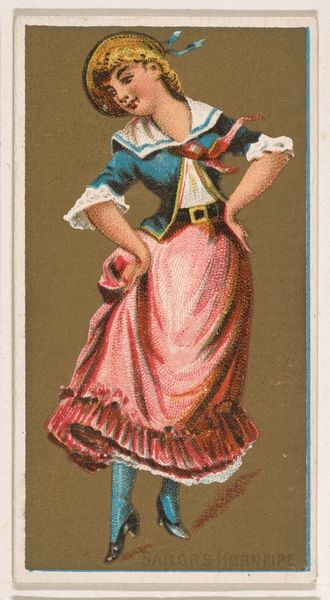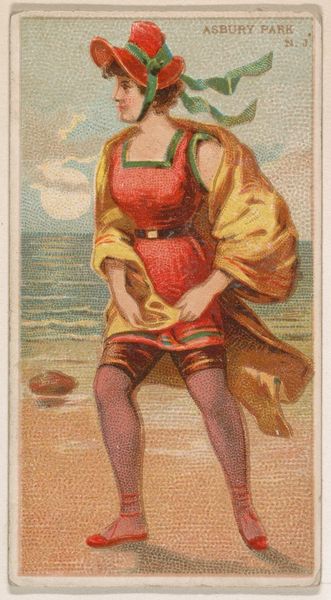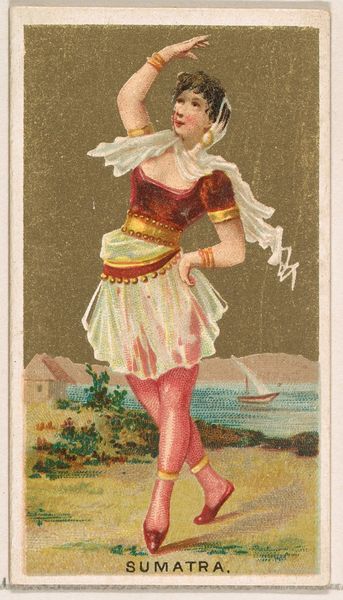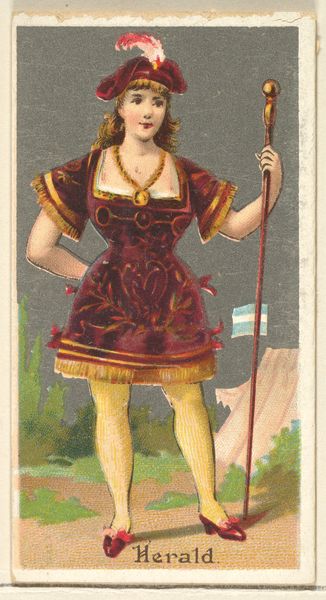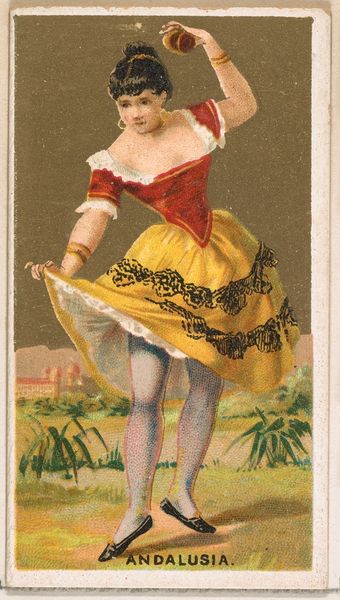
Brittany, from the Dancing Girls of the World series (N185) issued by Wm. S. Kimball & Co. 1889
0:00
0:00
#
portrait
#
water colours
# print
#
watercolour illustration
Dimensions: Sheet: 2 11/16 × 1 1/2 in. (6.8 × 3.8 cm)
Copyright: Public Domain
Editor: This small print from 1889, "Brittany, from the Dancing Girls of the World series" by William S. Kimball & Co., is part of a series of collectible cards. There's a certain... stereotypical quality to the image of this woman, and I’m curious to know more about what’s going on beneath the surface. How do you interpret this work? Curator: That's a crucial question. These cards, seemingly innocent, circulated within a society grappling with colonialism, and burgeoning consumerism. How does this image of a "dancing girl" from Brittany, presented as part of a global series, function within the colonial gaze? Editor: So, you're suggesting it's more than just a portrait, it's connected to broader social dynamics? Curator: Exactly. Consider how "Brittany" is being consumed as an image, a commodity. These cards perpetuated specific, often exoticized, representations of women and their cultures. What are your thoughts on the composition? Editor: I notice she’s separated from the background ships, almost like a cutout. And the style is simplified, almost mimicking Japanese prints? Curator: Excellent observation about the Japonisme influence, and you are right: the composition and style reduces Brittany, its people and traditions to easily digestible imagery, neglecting any semblance of true representation or self-expression. Do you think this "Brittany" has any agency? Editor: I don’t see any. It feels more like a representation than a person, like she’s been put on display. Curator: Precisely. It serves as a stark reminder of the power dynamics at play when cultures are consumed and repackaged for mass audiences. These images shape perceptions and, more insidiously, erase the complexities and lived experiences of real people. Editor: This really changes how I see it. It’s unsettling to think about these pretty pictures being part of a larger, oppressive system. I guess I hadn't fully grasped that. Curator: These seemingly harmless cards serve as powerful entry points into critical conversations about representation, cultural appropriation, and the lasting effects of colonialism. They push us to ask difficult questions about how we see and understand each other.
Comments
No comments
Be the first to comment and join the conversation on the ultimate creative platform.

